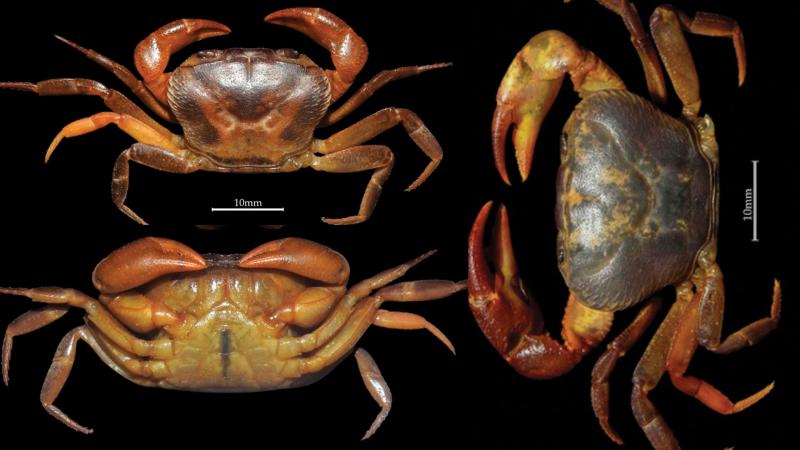
A new zoological discovery has been announced, with the description of a new genus and species of freshwater crab belonging to the family Gecarcinucidae (Order: Decapoda). The newly identified taxonomic lineage includes the genus Patithelphusa and the specific species Patithelphusa yercaudensis. The discovery by researchers from the Zoological Survey of India and Pukyong National University, Busan, Republic of Korea, details findings from the highlands of the Eastern Ghats, India.
Patithelphusa is named after Sameer Kumar Pati, a noted Indian taxonomist from ZSI. Patithelphusa yercaudensis refers to Yercaud, a town and hill station in Salem District in Tamil Nadu, and the location of the discovery.
This new species was discovered next to a rocky stream Manjakuttai, which is in the Shevaroy Hills region of Yercaud. This crab has several distinct physical traits, including a wide, shallow groove on its neck area (cervical groove), triangular, two-part bumps (teeth) on its front lip, a dull point near its eye (external orbital tooth), and a triangular tip on one of its specialised reproductive segments. During the study, researchers also noted that the female crab they examined was smaller than the male crab. This difference in size might indicate that the sexes naturally look different (sexual dimorphism), or it could simply reflect age differences (ontogenetic variation). However, because the scientists had only a small number of samples, they recommend that more investigation is needed to explain the size discrepancy confidently
The classification of this crab as a completely new taxonomic lineage involved a multifaceted approach, blending zoological examination with molecular biology techniques, ensuring that the features that set this crustacean apart were scientifically validated. The researchers began by sampling and conducting morphological examinations. This involved fieldwork to collect specimens, detailed analysis of their physical characteristics, and then contrasting the morphology of the newly discovered crabs with that of known species. To definitively classify this creature as a new genus and species, the morphological findings were rigorously supported by molecular identification. The genetic work started with DNA extraction, followed by PCR amplification and sequencing. This provided the raw genetic data necessary to map the crab’s evolutionary history, enabling the researchers to calculate genetic distances relative to its cousins and perform phylogenetic analysis. Phylogenetic analysis is vital, as it places the new organism within the broader evolutionary tree of life, specifically identifying its relationship to other Gecarcinucidae species and confirming its separation.





